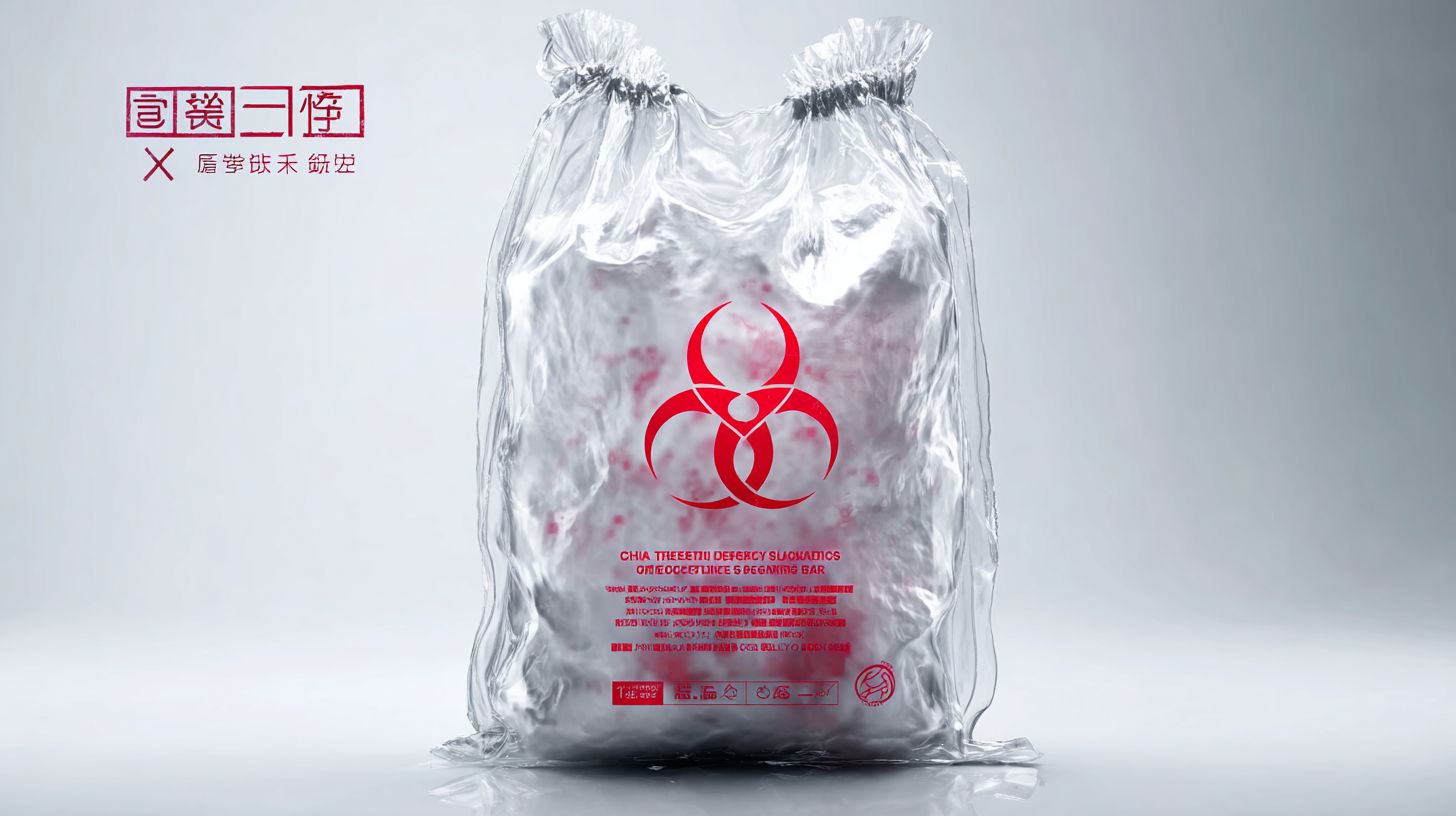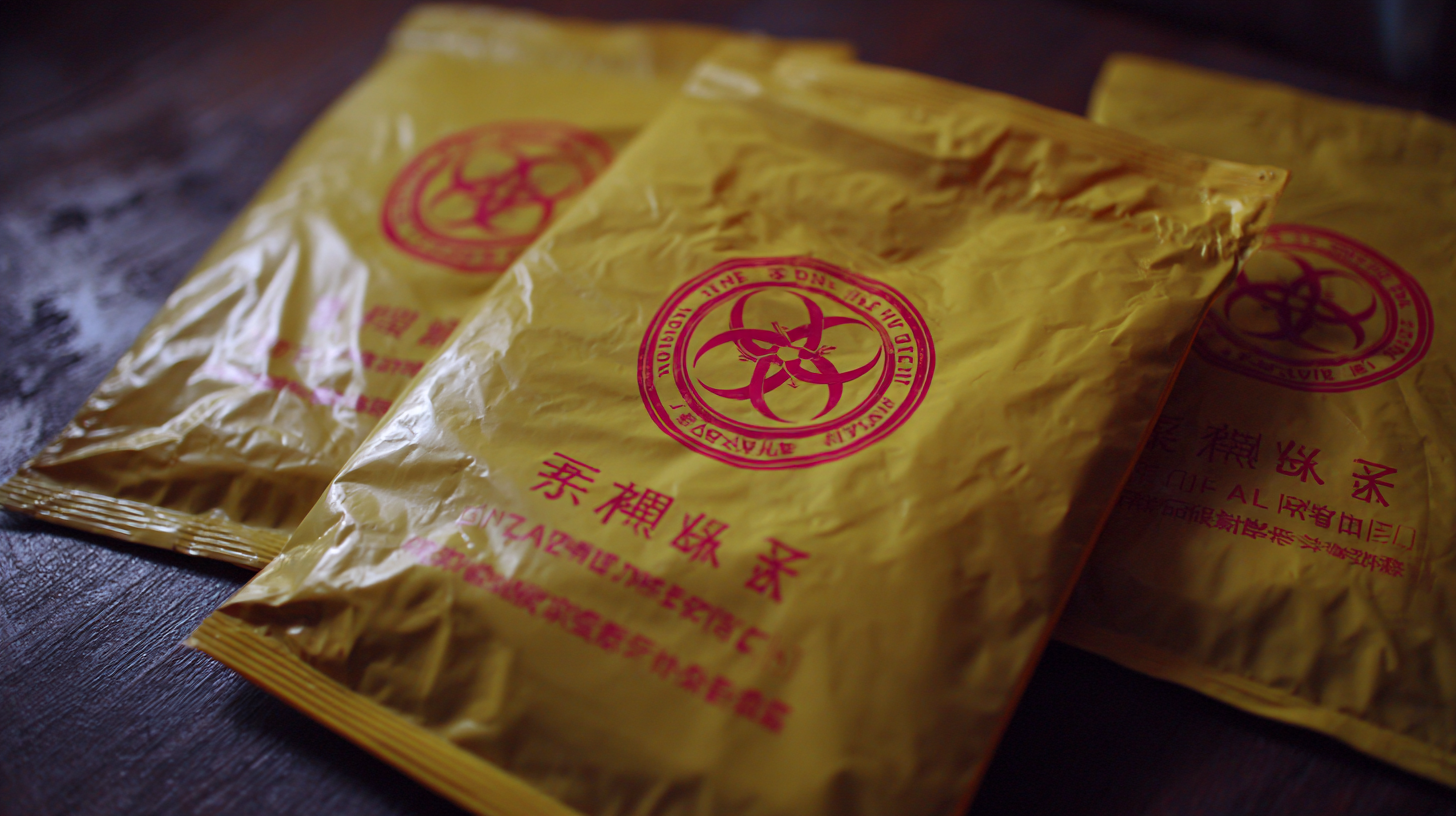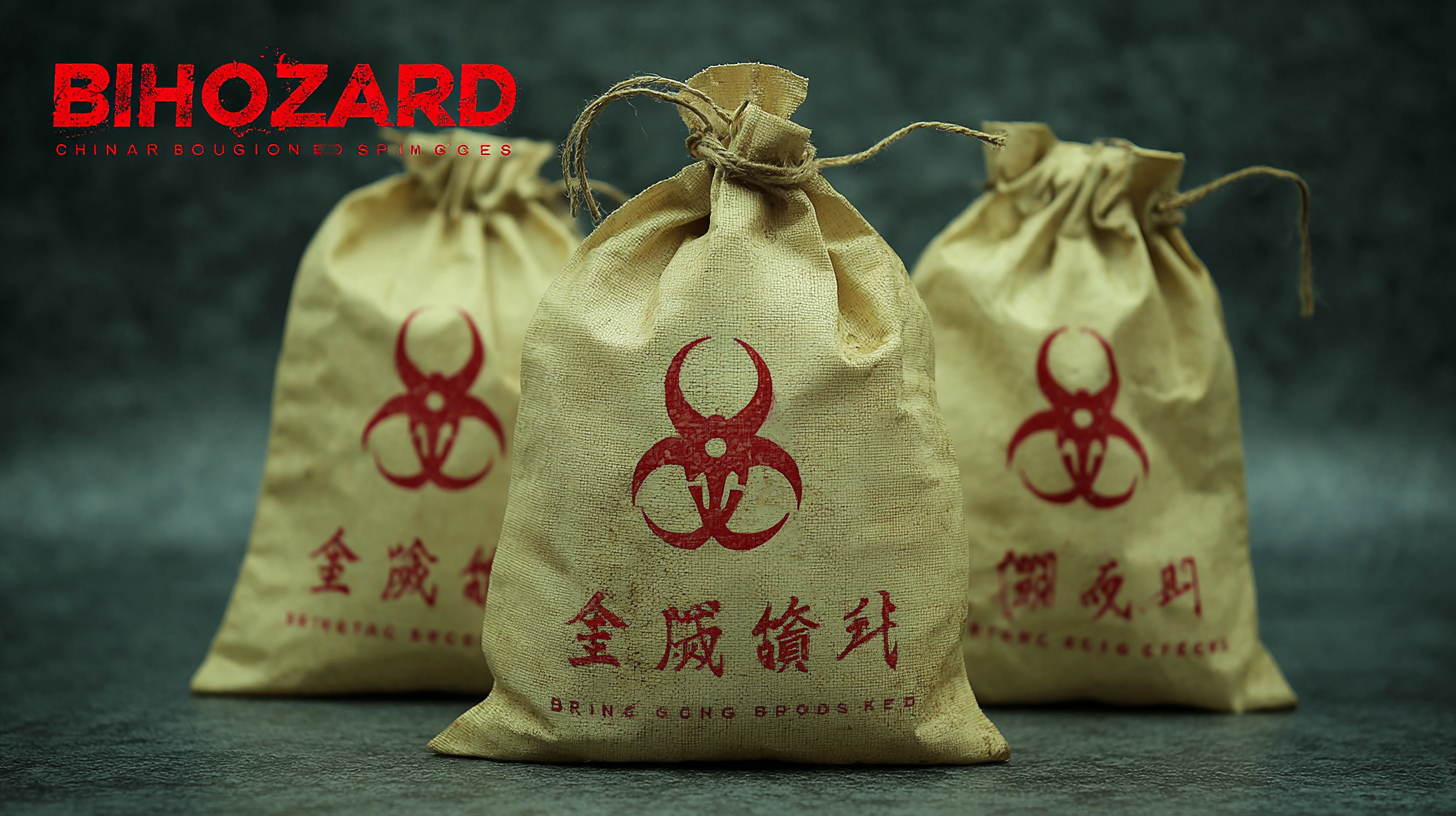 +86 178 5514 5298
+86 178 5514 5298
Leave Your Message
-
 CONTACT NUMBER
CONTACT NUMBER -
 CONTACT NUMBER
CONTACT NUMBER -
 CONTACT NUMBER
CONTACT NUMBER



In today's global healthcare landscape, the demand for reliable biohazard specimen bags has surged, driven by the need for safe and effective transport of hazardous materials. According to a report by Research and Markets, the biohazard containment market is expected to grow by over 5% annually, emphasizing the critical role these bags play in clinical, research, and environmental applications. As health organizations and laboratories face increasing scrutiny regarding biohazard management, the necessity for high-quality, compliant specimen bags becomes paramount. China's emergence as a trusted provider of biohazard specimen bags not only meets domestic needs but also caters to international standards, ensuring that safety and reliability are prioritized across borders.

This blog will explore essential checklists that healthcare providers and laboratories should consider when selecting biohazard specimen bags, underlining the importance of quality and regulatory compliance in safeguarding public health.
China has emerged as a leading figure in the global market for biohazard specimen bags, emphasizing its commitment to quality assurance and adherence to rigorous safety standards. With the implementation of advanced quality control systems and standard operating procedures, China ensures that its products meet international requirements. This is especially crucial in the healthcare industry, where the integrity of biohazard containment is paramount. Recent industry reports highlight that high-throughput urinary proteome analysis, facilitated by robust quality controls, demonstrates China's capability to handle sensitive biological samples effectively.
Moreover, China’s dedication to improving environmental safety extends beyond healthcare. Recent assessments show the seriousness of microplastic pollution, particularly in major water bodies like the Yangtze River. As China actively implements short-term and long-term emission controls, it showcases the country's commitment not only to public health but also to safeguarding natural resources. The efforts in managing microplastic contamination reflect a comprehensive understanding of environmental impacts, aligning with global sustainability goals. This parallel commitment to product quality in biohazard safety and environmental protection underlines China's strategic role in ensuring safety and quality across diverse sectors.
| Feature | Description | Standard Compliance | Usage Scenarios | Global Reach |
|---|---|---|---|---|
| Material Quality | Made from high-density polyethylene with excellent barrier properties | ISO 13485 | Laboratories, hospitals, and research facilities | Exported to over 50 countries |
| Durability | Resistant to punctures and tears | ASTM D1709 | Transportation of hazardous materials | Highly regarded in North America and Europe |
| Sealing Technology | Advanced double-seal design for enhanced leak resistance | ISO 14971 | Biological sample storage and delivery | Supplied to international health organizations |
| Customization | Available in various sizes and colors based on client needs | FDA compliant | Tailored solutions for specific applications | Partnerships with global healthcare providers |
When it comes to handling biohazard specimens, the quality and reliability of the containment materials are paramount. Chinese biohazard specimen bags have gained a global reputation owing to their exceptional features. These bags are designed with durable materials that ensure secure containment of hazardous substances, preventing leaks and contamination. Their robust construction means they can withstand extreme temperatures and pressures, essential for maintaining specimen integrity during transport.
One key feature that sets these bags apart is their user-friendly design, which often includes color-coded indicators and clear labeling systems. This not only facilitates quick identification but also aids in compliance with international safety standards. Additionally, many Chinese manufacturers offer customizable options to suit specific laboratory needs, making them a preferred choice for facilities worldwide.
**Tip:** When selecting biohazard bags for your laboratory, consider those that provide transparent viewing windows. This can help save time during inspections and enhance the safety protocols by allowing visual confirmation of contents without opening the package. Furthermore, always ensure that the bags adhere to local and international biohazard regulations to guarantee maximum protection.
 In the production of biohazard specimen bags, compliance with industry standards is paramount to ensure safety and effectiveness. These bags are crucial for the secure handling, transport, and disposal of biohazardous materials, which can pose severe health risks if not contained properly. Manufacturers need to adhere to regulations set forth by organizations such as the World Health Organization (WHO) and the Centers for Disease Control and Prevention (CDC) to meet the necessary requirements for durability, leak resistance, and clear labeling.
In the production of biohazard specimen bags, compliance with industry standards is paramount to ensure safety and effectiveness. These bags are crucial for the secure handling, transport, and disposal of biohazardous materials, which can pose severe health risks if not contained properly. Manufacturers need to adhere to regulations set forth by organizations such as the World Health Organization (WHO) and the Centers for Disease Control and Prevention (CDC) to meet the necessary requirements for durability, leak resistance, and clear labeling.
Quality control processes must be implemented throughout the production line to guarantee that each product meets stringent safety standards. This includes thorough testing for puncture resistance and functionality under various environmental conditions. Furthermore, investment in advanced technologies and materials can enhance the reliability of biohazard bags, addressing the increasing global demand for effective solutions in handling hazardous biological substances. By prioritizing compliance and quality in biohazard bag production, manufacturers not only protect public health but also contribute to a trusted supply chain for healthcare facilities worldwide.
China has emerged as a leader in the manufacturing of biohazard specimen bags, not only due to its advanced technology and strict quality control but also because of a firm commitment to sustainable practices. In the face of global environmental challenges, Chinese manufacturers are focusing on reducing their carbon footprint and ensuring that the materials used in biohazard specimen bags are eco-friendly. The adoption of biodegradable plastics and recyclable materials is becoming commonplace, which helps mitigate the adverse effects on the environment while maintaining the high standards required for safety and efficacy in medical and laboratory settings.
Moreover, innovative production techniques are being developed to minimize waste during the manufacturing process. By implementing energy-efficient machinery and optimizing resource consumption, manufacturers are not only improving operational efficiencies but also promoting responsible consumption. This holistic approach to sustainability ensures that while fulfilling global health needs, China is also contributing to the preservation of the environment. As a result, biohazard specimen bags produced in China are increasingly trusted by healthcare providers around the world, meeting both safety standards and environmental needs.
In today's interconnected world, the demand for reliable biohazard specimen bags is more critical than ever. Chinese manufacturers have stepped up to meet this global need by producing high-quality bags designed for various applications, from medical facilities to research laboratories. These bags are not only crafted to securely contain hazardous materials but also comply with international safety standards, ensuring that they can be trusted across different regions and sectors.
When selecting biohazard specimen bags, consider these tips to make an informed choice. First, ensure the bags are clearly labeled with warning symbols and informational text regarding safety handling. Second, pay attention to the material; bags made from durable, puncture-resistant materials will protect contents from leakage and contamination. Lastly, check for features like zip closures or tie handles that enhance usability and security during transport.
As Chinese biohazard specimen bags continue to gain recognition for their quality and versatility, they play a significant role in global healthcare, research, and environmental safety. Their adaptability to diverse needs demonstrates how a commitment to quality can have a far-reaching impact, fostering trust in an essential component of safe specimen handling.

